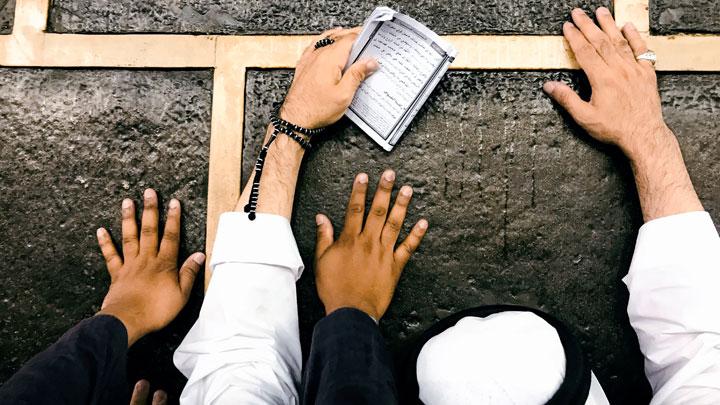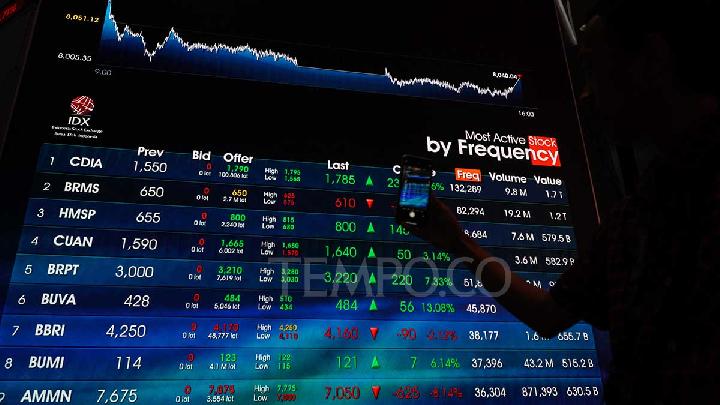TEMPO.CO, Jakarta - While the terms medieval are often strongly associated with European history, the medieval period, or Middle Ages (roughly 5th to 15th centuries), was a global era of cultural, political, and urban development. In fact, the largest medieval cities turn out to lie outside the European continent
Angkor, in modern-day Cambodia, is widely considered one of the largest medieval cities worldwide, with a vast and sophisticated urban infrastructure. Though it didn’t lead in population size, the Khmer capital played a significant role during the Middle Ages, especially as the political and religious heart of the powerful Khmer Empire that dominated much of Southeast Asia.
But the Southeast Asian metropolis wasn’t alone in holding such a reputation. Here’s a look at the top 10 largest medieval cities around the world, according to The Collector.
List of the Largest Medieval Cities Around the World
1. Angkor, Khmer Empire, Cambodia
The beating heart of the grand Khmer Empire, Angkor is one of the largest medieval cities in the world. Located between the mountains and the Tonle Sap lake, the ancient metropolis served as a major political, cultural, and religious capital of medieval Southeast Asia.
Its extensive trade networks connected China, India, and even Rome, with the city exporting valuable commodities such as rare woods and elephant tusks. The peaceful coexistence of Hinduism and Buddhism, along with an advanced system of canals that supported agriculture, transportation, and daily life, stand as lasting evidence of Angkor’s role as one of the finest examples of exceptional civilization in the Middle Ages.
2. Baghdad, Abbasid Caliphate, Iraq
Founded in 762, Baghdad held immense political power as the capital of the Abbasid dynasty. But its significance during the Middle Ages extended far beyond politics, as the city emerged as a key international hub on the Silk Roads.
Its prominence continued to rise as Baghdad became the most important cultural and intellectual center of the Arab and Islamic world. With the famed House of Wisdom—a grand library and research institution—at its heart, the city solidified its status as the center of the scientific world.
3. Gangaikonda Cholaparum, India
Founded by Rajendra Chola I, Gangaikonda Cholapuram served as the capital of the mighty Chola dynasty. The strategically planned city thrived for over 250 years, standing at the forefront of South Indian culture, governance, and education.
Both in its historical prime and today, Gangaikonda Cholapuram is best known for its crown jewel—the Brihadeeswarar Temple. This towering structure is part of the UNESCO World Heritage Site known as the Great Living Chola Temples.
4. Constantinople, Byzantine Empire, Turkey
Constantinople was renowned as a major international trade hub, strategically positioned at the crossroads of Europe and Asia. Its Byzantine culture was extraordinarily diverse, rooted in Greek traditions and Christian beliefs. Despite facing repeated challenges that pushed the city to the brink of decline, Constantinople endured and became the capital of the Ottoman Empire in 1453.
5. Cairo, Fatimid Dynasty, Egypt
Cairo is undoubtedly one of the largest medieval cities in the world. Founded in 969 AD, the city soon emerged as a political, cultural, and economic center—a role it would continue to play for centuries.
Its strategic location near the Nile Delta enabled Cairo to become the seat of the Fatimid Dynasty, whose influence spanned North Africa, parts of the Arabian Peninsula, and the Levant. The construction of the Al-Azhar Mosque, which later evolved into Al-Azhar University, further cemented the city’s role as a leading center of Islamic in the medieval world.
6. Hangzhou, China
Situated in China’s Zhejiang province, Hangzhou was a prosperous city in both material wealth and cultural development. The city stands as a living testament to the many periods of prosperity it experienced under various dynasties.
Benefiting from its location within the Silk Road trade network, Hangzhou long served as a major center of commerce and culture. To this day, the city continues to thrive, now standing as the headquarters of tech giant Alibaba.
7. Kaifeng, China
Before Hangzhou rose to prominence, Kaifeng served as the capital of the Northern Song Dynasty. Its reputation as one of the largest medieval cities in the world was largely attributed to its strategic location.
Connected to both the Yellow River and the Grand Canal, Kaifeng became a thriving hub of trade and commerce. Beyond its economic vitality, the city also held significant cultural importance. Notably, Kaifeng is the only place in China with a well-documented historical Jewish community.
8. Paris, France
Now known as the City of Light, Paris stood out in medieval Europe as a center of power, religion, and learning. The University of Paris, officially recognized during this period, helped establish the city's lasting reputation as a hub of intellectual and theological scholarship. Many of Paris’s medieval legacies can still be explored today, with the most notable include the iconic Notre-Dame Cathedral and the Louvre.
9. Tenochtitlan, Aztec Empire, Mexico
Founded in 1325 on an island in Lake Texcoco, Tenochtitlan was the dazzling capital of the Aztec Empire. Its advanced infrastructure included canals, causeways, aqueducts, and an intricate market system.
The city was not only a political and military stronghold but also a cultural and religious center, anchored by the towering Templo Mayor. At its peak, Tenochtitlan was home to an estimated 200,000 to 400,000 people—a level of urban sophistication that stunned Spanish conquistadors when they arrived and ultimately conquered the city in the 16th century.
10. Venice, Italy
Venice rose to prominence as a powerful maritime republic during the Middle Ages, controlling vast trade networks across the Mediterranean and beyond. Built on a series of islands in a lagoon, the city found its early success through the salt trade — one of the medieval world’s most vital food preservatives. Venice’s wealth continued to grow, fueling the development of its distinctive art, architecture, and stable republican governance.
Shaped by geography, trade, and leadership, the largest medieval cities around the world truly reflect the global reach and sophistication of urban life long before the modern era. For more of a similar discovery, let’s take a look at the largest ancient cities in the world.
Editor’s Choice: 15 World's AI Cities: Singapore Tops the List
Click here to get the latest news updates from Tempo on Google News









































:strip_icc():format(jpeg)/kly-media-production/medias/4959986/original/038884300_1728016058-xavier-mouton-photographie-ry_sD0P1ZL0-unsplash.jpg)



:strip_icc():format(jpeg)/kly-media-production/medias/5096393/original/071176000_1737004609-Screenshot_2025-01-16_120239.jpg)


:strip_icc():format(jpeg)/kly-media-production/medias/3395224/original/007940700_1615106339-WhatsApp_Image_2021-03-07_at_8.41.57_AM.jpeg)

